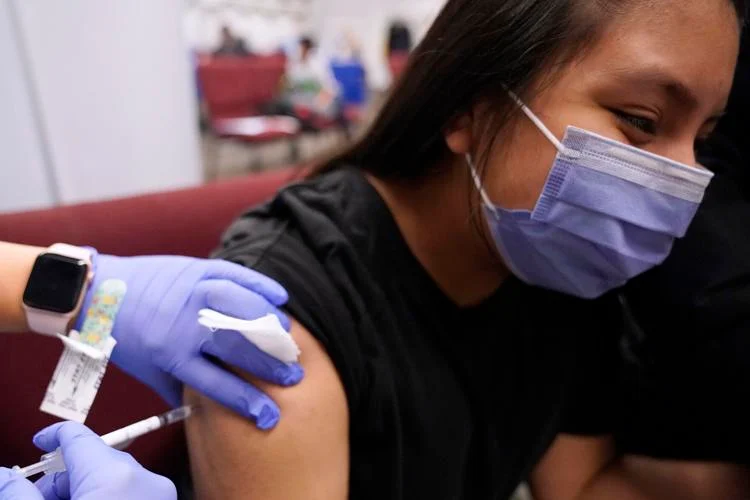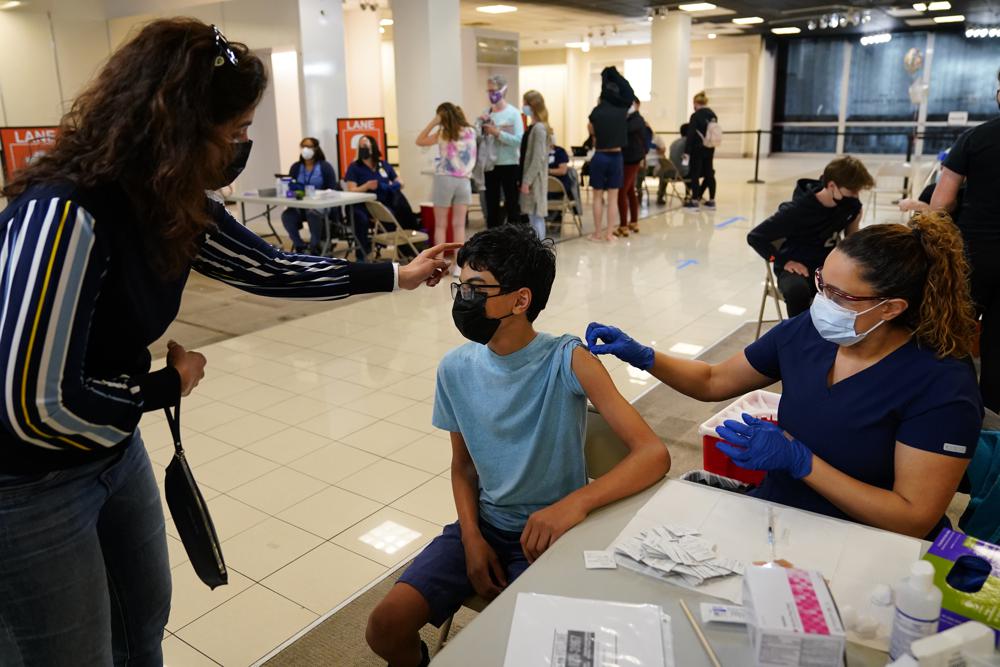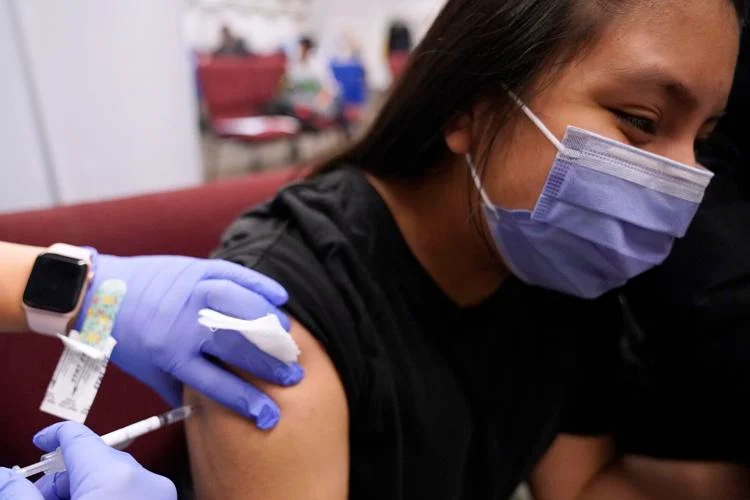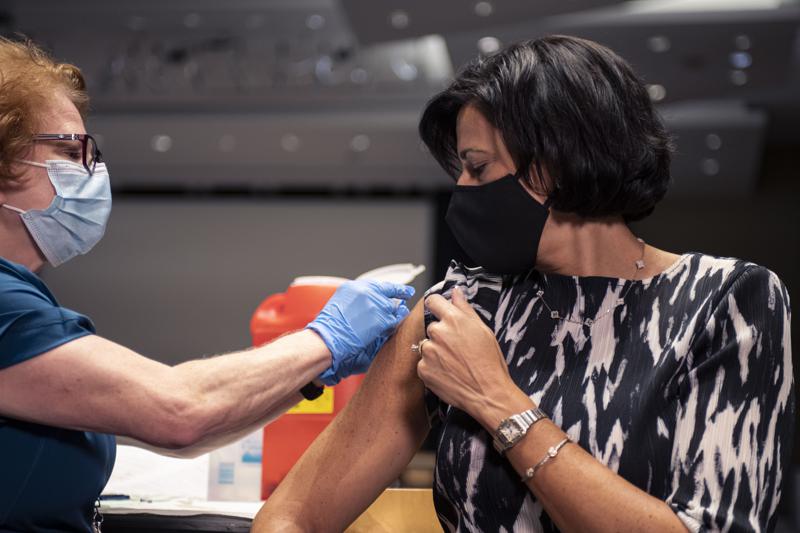With winter temps coming, hypothermia can be fatal

It’s December. This time of year brings Christmas, New Year’s, bowl games, and a lot of parties. It also brings cold weather, and cold weather can kill. The Alabama Department of Public Health released a statement on Wednesday warning that hypothermia can lead to death. ADPH warned that the milder climate of Alabama in winter may mask the need to be aware of weather conditions. Hypothermia is a medical emergency that can lead to death. Hypothermia occurs when the body’s core temperature falls below 95 degrees F, just a few degrees less than the normal body temperature. When exposed to cold, human bodies begin to lose heat faster than it can be produced. According to provisional data for 2022 from ADPH’s Center for Health Statistics, there were 18 deaths in Alabama from hypothermia in 2022. That is an increase from the 10 deaths in 2021. To prevent hypothermia, stay warm, keep well informed and take extra precautions during times of extremely cold weather. Everyone should remember to lower the risks of cold-weather health problems by dressing in multiple layers to help retain body heat, limit time outdoors, and remove wet clothing immediately. This all makes sense to someone reading this in a house with the furnace on and the thermostat maintaining a minimum temperature of 68 degrees. Still, ADPH cautions that hypothermia makes people unable to think clearly or move well. This makes hypothermia especially dangerous, because a person may not know when it is occurring and then will not be able to do anything about it. According to the Centers for Disease Control and Prevention (CDC), victims of hypothermia are often: · Older adults with inadequate food, clothing or heating · Babies sleeping in cold bedrooms · People who remain outdoors for long periods—the unhoused, hikers, hunters and others · And People who drink alcohol or use illicit drugs. As the body ages, the ability to maintain a constant internal temperature decreases. Hypothermia risk is even greater when an older person has a chronic condition that affects the circulatory or neurologic systems, or the thyroid. When the core temperature falls, bodily functions shut down. Living quarters for older adults should be heated to at least 65 degrees F, they should wear suitable clothing, have plenty of warm blankets available, and eat nutritionally balanced food. In addition to advanced age, common risk factors for hypothermia are substance abuse and mental impairment. Certain commonly used drugs such as tranquilizers may contribute to the onset of hypothermia. Many deaths from hypothermia are complicated by alcohol consumption, which can lead to dehydration and impaired judgment. According to the CDC the symptoms of hypothermia include: · Shivering · Exhaustion or feeling very tired · Confusion · Fumbling hands · Memory loss · Slurred speech · Drowsiness In babies the symptoms are: · Bright red, cold skin · Very low energy Immediate medical attention is needed if a person’s temperature falls below 95 degrees F. If unable to get medical help right away, try to warm the person up. · Get the person into a warm room or shelter. · Remove any wet clothing the person is wearing. · Warm the center of the person’s body—chest, neck, head, and groin—using an electric blanket, if available. You can also use skin-to-skin contact under loose, dry layers of blankets, clothing, towels, or sheets. · Warm drinks can help increase body temperature, but do not give alcoholic drinks. Do not try to give beverages to an unconscious person. · After body temperature has increased, keep the person dry and wrap their body, including their head and neck, in a warm blanket. · Get the person proper medical attention as soon as possible. A person with severe hypothermia may be unconscious and may not seem to have a pulse or to be breathing. If this happens, handle the person gently, and get emergency assistance immediately. Perform CPR, even if the person appears dead. CPR should continue until the person responds or medical aid becomes available. Keep warming the person while performing CPR. In some cases, hypothermia victims who appear to have died can be successfully resuscitated. On extremely cold nights check on elderly relatives and neighbors, make sure that the children are inside and not outside playing, and bring the pets inside. To connect with the author of this story or to comment, email brandonmreporter@gmail.com.
Nonprofit group warns of increasing number of overdose deaths

A nonprofit organization’s analysis of government data estimates drug overdose deaths increased 1.7% in 2023 to reach a new record high. The CDC estimates that more than 111,000 Americans died from a drug overdose in the 12-month period that ended in April. More than 77,000 of those deaths involved fentanyl and other synthetic opioids other than methadone. Both are record highs and increases over the prior year, according to Families Against Fentanyl. The Families Against Fentanyl analysis of CDC data found that illicit fentanyl and other synthetic opioid deaths increased 4.9%. The report comes as federal, state and local governments are working to reduce opioid deaths. Oregon had the highest rate of increase in fentanyl deaths in the nation, with a one-year increase of more than 67%, compared to a national average of 4.9%. The state also ranked second highest in the nation for increases in overdose deaths overall, with an increase of 23%, according to the Families Against Fentanyl report. In Washington, overdose deaths increased by over 34%, the highest one-year increase in the nation. Washington also ranked second highest in the nation for increases in fentanyl deaths, with an increase of 65%, according to the Families Against Fentanyl report. Families Against Fentanyl previously asked President Joe Biden to designate illicit fentanyl as a weapon of mass destruction to reduce fentanyl deaths, which have doubled in 30 states in two years. Fentanyl, which is 80 to 100 times more potent than morphine, is used daily in hospitals around the country for everything from epidurals during childbirth to pain management for cancer patients. However, illicit fentanyl is driving the country’s overdose epidemic. Illicit fentanyl is primarily made in foreign labs. It is then smuggled into the United States, most often through Mexico, according to the U.S. Drug Enforcement Administration. Illicit fentanyl is often mixed with other drugs or made into pills made to resemble prescription opioids.
Alabama Public Health warns everyone to take extra precautions to prevent heat-related illnesses and deaths

Temperatures are expected to be in the 100s across large parts of Alabama this week. While 93 degrees is hot, 101 degrees is much more dangerous. Birmingham meteorologist James Spann predicts it will be the hottest week of the Summer. With temperatures in the triple digits and high heat indices expected for this week, the Alabama Department of Public Health (ADPH) advises the public to be alert to the warning signs of heat illnesses. Heat-related illnesses occur when the body is exposed to high temperatures and high humidity. According to the Centers for Disease Control and Prevention (CDC), people at the highest risk of heat illnesses include people ages 65 and older, children younger than 2, and people with chronic diseases or mental illnesses. Others who are disproportionately affected include athletes, outdoor workers, and people in low-income households. Anyone exposed to high temperatures or extreme heat, however, can experience symptoms when the body’s temperature control system is overloaded. The ADPH and the CDC are urging the public to stay cool, hydrated, and informed. The most common heat-related illnesses are as follows: · Heat cramps · Heat exhaustion · Heatstroke Heat cramps – include muscle pains or spasms (abdomen, arms, or legs), profuse sweat, and high salt concentration in the sweat. Heat exhaustion– is associated with heavy sweating, paleness, muscle cramps, tiredness, weakness, dizziness, headache, nausea, or vomiting, and fainting. Other possible symptoms may include cool and moist skin, fast and weak pulse rate, fast and shallow breathing, or irritability. Older adults, those with high blood pressure, and those working or exercising in a hot environment are prone to heat exhaustion. If heat exhaustion is not treated, it may progress to heatstroke. Heatstroke or sunstroke – the most severe heat-related illness, a life-threatening problem, may occur when the body is unable to control its temperature. Body temperature may rise to 106 degrees F or higher within 10 -15 minutes. Signs include an extremely high body temperature, red, hot, and dry or moist skin, rapid, strong pulse, throbbing headache, dizziness, nausea, dehydration, combativeness or confusion, and unconsciousness. Heat stroke is a medical emergency, and even with immediate treatment, it can be life-threatening or cause serious long-term problems. Recommendations are that people drink plenty of fluids. Avoid excess alcohol or caffeinated beverages. To prevent dehydration, stay in an air-conditioned room, keep out of the sun by seeking shelter, wear a wide-brimmed hat, light-colored and loose-fitting clothing, use sunscreen of SPF 15 or higher, take cool showers or baths, and reduce or eliminate strenuous activities during the hottest times of the day. NEVER leave people or pets in a parked vehicle. Persons with heart disease, diabetes, obesity, poor circulation, or previous stroke problems, people of older and younger ages, and those taking certain medications are at greater risk of becoming ill in hot weather. To connect with the author of this story or to comment, email brandonmreporter@gmail.com.
COVID-19 public health emergency will expire on Thursday

The Alabama Department of Public Health (ADPH) announced on Tuesday that the federally declared public health emergency for COVID-19 will expire on Thursday. Case numbers, hospitalizations, and deaths from COVID-19 are significantly lower now than during surges of the virus. ADPH will continue providing COVID-19 testing and vaccines for uninsured/underinsured people at the local county health departments even after the public health emergency ends. Even though the emergency is no longer in effect, COVID-19 remains a clear and present danger. “Although the COVID-19 pandemic is entering a new phase, the disease is still causing suffering and death in Alabama,” State Health Officer Dr. Scott Harris said. “ADPH is committed to monitoring the effects of this virus in Alabama and will continue to provide data that is accurate and actionable.” For the past three years, ADPH has had access to a large amount of COVID-19 data, some of which had been required to be submitted to the federal government. As these requirements transition, COVID-19 will continue to be reportable in Alabama, but some data will no longer be available. The current COVID-19 dashboards will be modified to use the available data and to better align with data from the Centers for Disease Control and Prevention (CDC). The current Alabama COVID-19 dashboards will update for a final time this week and be available for archive purposes for an unspecified amount of time. ADPH will continue to publish hospital admission data and COVID-19 death data which will be updated, but its reporting frequency will change. Vaccine administration reporting will not be reported as ADPH will no longer receive data from vaccine providers. ADPH continues to recommend the Bivalent COVID-19 Vaccines. The Centers for Disease Control and Prevention (CDC) has simplified its COVID-19 vaccine recommendations. Among the recommendations are that adults ages 65 and older and immunocompromised adults can receive a second dose of the updated vaccine. The CDC recommends that children ages six and older and adults receive an updated bivalent mRNA COVID-19 vaccine, regardless of whether they previously completed their (monovalent) primary series. Alternatives to mRNA COVID-19 vaccines remain available for people who cannot or will not receive an mRNA vaccine. The federal supply of COVID-19 vaccine will be available at no charge until the current supply is exhausted. After this supply of COVID-19 vaccine has been depleted, the vaccine will be sold commercially. People with public or private insurance will continue to be able to access authorized COVID-19 vaccines. For the uninsured, the federal government has announced it will fund a program to keep COVID-19 vaccines free after the vaccines move to the private market. A new partnership will cover the administrative costs of giving doses of vaccines at pharmacy chains and county health departments to uninsured people. Some doctors remain skeptical of the effectiveness and safety of the COVID-19 vaccines, which use experimental mRNA technology. The end of the public health emergency also means there will be changes in the availability of free COVID-19 tests. People covered by Medicaid can access free at-home tests through September 2024. The ADPH will continue to monitor COVID-19 as it regularly monitors other respiratory diseases and will respond to any future surges or developments. COVID-19 is caused by the SARS-CoV-2 virus – a type of coronavirus. 1,162,474 Americans have died, including 21,137 Alabamians, in the COVID-19 global pandemic. 107 million Americans contracted the virus despite efforts to limit the spread of the virus. To connect with the author of this story or to comment, email brandonmreporter@gmail.com.
Alabama has the fifth-highest gun death rate in the U.S.

New data from the Centers for Disease Control and Prevention (CDC) show that Alabama has the fifth-highest death rate by shootings. That includes murder, suicide, and unintentional accidents. Alabama had 26.09 gun deaths per 100,000 residents in 2021. Mississippi had the highest rate of gun deaths at 32.61 deaths per 100,000. Louisiana came in second with 28.42 deaths per 100,000. New Mexico was third with 27.32 and Wyoming with 26.78. The national average is 14.71 gun deaths per 100,000 citizens. The five states with the lowest rates of gun deaths in 2021 were Rhode Island with 5.84, New York with 5.43, New Jersey with 5.13, Hawaii with 4.93, and Massachusetts at 3.54. Gun control advocates with the Violence Policy Center (VPC) insist that states with the lowest rates of overall gun death in the nation have strong gun violence prevention laws and low rates of gun ownership. The VPC analysis used 2021 CDC Wonder data and refers to overall gun death rates in 2021, the most recent year for which data is available. The total number of Americans killed by gunfire in 2021 was 48,830, an eight percent increase from 45,222 in 2020. The nationwide gun death rate in 2021 increased from 13.73 per 100,000 in 2020 to 14.71 per 100,000 in 2021. Both gun homicides and gun suicides increased in 2021. The number of gun homicides increased from 19,384 in 2020 to 20,958 in 2021 – an eight percent increase. Firearm suicide deaths also increased by eight percent in 2021 – from 24,292 in 2020 to 26,328 in 2021. 67,423 Alabamians died in 2022. The largest cause of death in Alabama was from heart disease, with 15,563 – up 6.96%. The second leading cause of death was cancer, with 9,830 – down 2.45%. 1,098 Alabamians died from firearms (suicides, murders, and accidents). Firearm deaths were up .64%. 598 Alabamians were murdered in 2022 by all methods. Murders were up .67% in the state last year. The total number of deaths by suicide (all methods) was 819. That was up .61%. Both total deaths and death rates were up in 2022. These numbers are still very preliminary. Beginning on January 1, all Alabamians who have not lost their legal gun rights can carry their handguns with them on their person or in their vehicles whether they have a concealed carry permit or not. This is due to the passage of permitless carry (also called constitutional carry) legislation by the state legislature in 2021. The end of the permit requirement went into effect on January 1. Alabama is a strong Second Amendment state with a very high rate of gun ownership. To connect with the author of this story or to comment, email brandonmreporter@gmail.com.
Steve Marshall joins letter urging the CDC to drop COVID-19 vaccine from child immunizations

Alabama Attorney General Steve Marshall announced on Saturday that he had joined eleven other attorneys general in a letter calling on the Centers for Disease Control and Prevention’s (CDC) Advisory Committee on Immunization Practices (ACIP) not to include the COVID-19 vaccination on the list of child immunizations. “This week, the CDC acted without proper authorization in voting to release its child immunization recommendations before the close of the public comment period,” AG Marshall said. “But that’s just for starters. The CDC’s decision is unnecessary and in many states subjects children to retaliation for their parent or guardian’s decision to decline COVID-19 vaccinations. “Fortunately, Alabama law prohibits institutions of education—both public and private – from requiring students to prove any new immunization status as a condition of attendance,” Marshall continued. “However, the CDC’s recent move is damaging to the nation at large and is another example of that body and the medical community forcing unproven policies and medicines on children who are not at risk of bodily harm.” On Thursday, Attorney General Marshall and his colleague attorneys general wrote CDC Director Rochelle Wolensky, calling on the CDC not to include the COVID-19 vaccine in the Vaccines for Children Program (VFC), a program created by Congress in the wake of a measles outbreak to ensure that kids from low-income families have access to free vaccines. The COVID-19 vaccine has been added to the VFC, but is not required for admission to a public school within the state of Alabama. “The COVID-19 vaccine does not provide the same protection against life-threatening illnesses,” the attorneys general wrote in their letter. “Instead, it could put more kids at risk instead of protecting them, which is the purpose of the VCF. The CDC should not be treating kids in low-income households as lab experiments. Nor should pharmaceutical companies be allowed to use low-income families as cash cows.” The COVID-19 vaccines have proven to be enormously ineffective and come with a number of side effects. “Given the lack of need for kids to obtain the vaccines and their lack of effectiveness, adding the COVID-19 vaccine to the list of childhood immunizations amounts to little more than a payout to big pharmaceutical companies at the expense of kids and parents,” added the attorneys general. The letter was originally written by Louisiana Attorney General Jeff Landry. The attorneys general of Arizona, Florida, Indiana, Missouri, Montana, Nebraska, South Carolina, Texas, Oklahoma, and Utah also joined the letter. To connect with the author of this story, or to comment, email brandonmreporter@gmail.com.
COVID-19 vaccine has been included in the Vaccines for Children Program

The Alabama Department of Public Health (ADPH) announced on Friday that they are “aware of yesterday’s vote by the Advisory Committee on Immunization Practices (ACIP) that the COVID-19 vaccine be part of the Vaccines for Children (VFC) program.” The ACIP panel unanimously has advised that the Center for Disease Control and Prevention (CDC) make COVID-19 among the routine vaccinations for both adults and for children as young as six months. ADPH emphasized in their statement that the ACIP’s vote to include COVID-19 in VFC is not a mandate for children to take the vaccine. The vote to include the COVID-19 vaccine in the VFC program is the mechanism to ensure that, when the COVID-19 vaccine is no longer provided free by the federal government, uninsured and underinsured children can have access to the vaccine without charge. The VFC is a federally funded program that provides vaccines at no cost to children who might not otherwise be vaccinated due to their inability to pay. The CDC buys vaccines at a discounted rate for distribution to registered VFC providers. Many physicians in Alabama are VFC providers so that their patients can receive recommended vaccines. Children who are eligible for VFC vaccines are entitled to receive the same ACIP-recommended vaccines as any other child. To attend a public school in Alabama, a child should have a Certificate of Immunization. The vaccines that are required for K-12 in Alabama are diphtheria, pertussis, tetanus, polio, measles, mumps, rubella, and varicella (chickenpox). Children attending preschool are also required to have Haemophilis influenza type B (Hib) and pneumococcal vaccines. ADPH allows medical exemptions and religious exemptions in accordance with the Rules below. ADPH does not have vaccine requirements for college-age or other groups. Not everyone agrees with the inclusion of the vaccine in the VFC. Dr. David Calderwood M.D. with Concerned Doctors of Alabama expressed his opposition to the mass vaccinations of America’s children for the COVID-19 vaccine in a statement. “It is well established that the COVID vaccines do not prevent the infection or the spread of the infection,” Dr. Calderwood said. “They only decrease the death rate from the infection for a period of months then this benefit disappears. Since the vaccine’s only benefit is a temporary reduction in mortality and a healthy child has essentially a 0 chance of dying from COVID, the vaccines cannot benefit them. We do know on the other hand that the vaccines can cause harm.” Messenger RNA–or mRNA–exists in all the cells in the human body. It is an essential component of all living organisms and has been in cells for billions of years. Messenger RNA directs the body to make proteins. To protect the mRNA and help deliver it into cells, the mRNA is wrapped by medical researchers with lipids, or fats. mRNA vaccines are given as an injection. Once the vaccine is delivered, the body takes over and makes the protein according to the mRNA’s instructions. Moderna claims that the mRNA doesn’t stay in the body very long once its job is done. And it does not cause permanent changes or alter DNA. Moderna claims that the COVID-19 vaccine is just the beginning and mRNA technology could “revolutionize medicine.” Dr. Calderwood remains skeptical. “We know that the mRNA vaccines can cause damage to the lining of blood vessels, markedly increase blood clots, increase cardiac risk score, suppresses the innate immune system, and can cause small fiber neuropathy, myocarditis, autoimmune hepatitis, and thrombotic thrombocytopenia among other things,” Calderwood said. “The nanoparticles in these vaccines are deposited in high concentrations in the testis and ovaries with unknown effects on the reproductive potential of children. In addition, more than 30,000 deaths and almost 60,000 permanent disabilities have occurred after the COVID vaccines. This represents more deaths or permanent disabilities after these vaccines than all the other vaccines combined over the last 30 years. If parents truly understood all the data that we now know about these vaccines they would never allow their children to be vaccinated with COVID vaccines.” The Concerned Doctors believe that the long-term effects of the COVID-19 vaccine is being ignored and that more research is needed before making this recommended. “The decision by the FDA to place the COVID vaccine on the children’s vaccination schedule is irrefutable evidence that the FDA is a captured agency doing the bidding of the pharmaceutical industry,” Calderwood said. “There is no scientific evidence that this vaccine would benefit children. To the contrary, the Covid vaccine can only harm children. The recent statement from ADPH in support of these vaccines represents a complete lack of review of the huge body of science which now includes over 1000 articles and studies in peer review journals that delineate the harms of this vaccine. The ADPH is willing to follow the captured federal agencies without questioning or doing their own research.” Public schools presently do not require that children receive the COVID-19 vaccine. “If these vaccines are made a requirement for public schools we are putting our children’s health in jeopardy for no benefit to them or society,” Calderwood said. “Every parent should vehemently oppose these COVID vaccines for children.” To connect with the author of this story, or to comment, email brandonmreporter@gmail.com.
State attorneys general led by Louisiana’s Jeff Landry urge CDC to reverse COVID vaccine school guidance

Attorneys general in a dozen states are urging the Centers for Disease Control’s Advisory Committee on Immunization Practices to reverse course on recommendations to include the COVID-19 vaccine on federal child immunization lists. “This action could deny many parents the freedom to determine whether to subject their kids to an experimental vaccine,” Louisiana Attorney General Jeff Landry said. The attorneys general penned a letter to the CDC’s ACIP committee Thursday in regards to two votes taken during meetings this week, which occurred before the close of the public comment period on including the COVID-19 vaccine on child immunization lists. The advisory committee voted 15-0 on Thursday to add COVID-19 vaccines to the 2023 schedule of childhood and adult immunizations, and the CDC is expected to accept the recommendation. The committee voted unanimously the day prior to add the vaccine to the Vaccines for Children Program, which was created by Congress to ensure low-income children have access to free vaccines. “States have traditionally relied heavily on these lists to inform their vaccination policies,” the letter reads. “As a result, in many states, your decision is unnecessary and subjects children to retaliation for their parent or guardian’s decisions to decline this vaccination.” The letter argues vaccines currently included on the childhood immunization lists protect against viruses that “have killed millions of children over the years,” unlike COVID-19, which “does not pose the same danger to kids as polio or measles, nor does the vaccine provide the same protection.” “While most vaccines prevent the vaccinated individual from getting the disease in the first place and stop the spread of the disease, the COVID-19 vaccine does neither,” the attorneys general wrote. Including the COVID-19 vaccine could do more harm than good by undermining the public’s faith in the CDC, they wrote, citing ongoing research into both the virus and vaccines, as well as “widespread disagreement on whether kids need to be vaccinated” as important reasons to wait. “It’s far too early in the process to potentially require otherwise healthy kids to get a vaccine that will not prevent them or others from getting sick. In fact, the vaccine could do the opposite and create complications for kids who are forced to get the vaccine to attend school or play sports,” the letter reads. “Given the lack of need for kids to obtain the vaccines and their lack of effectiveness, adding the COVID-19 vaccine to the list of childhood immunizations amounts to little more than a payout to big pharmaceutical companies at the expense of kids and parents.” The attorneys general pointed to the continued “fallout of school closures and the forced masking of kids” that resulted from the “failures of misguided politicians, government bureaucrats, and their select experts, “and urged the committee to “reject considerations of adding the COVID-19 vaccine to the list of childhood immunities and the VFC.” “A modicum of humility is in order from the elites who demanded Americans’ trust then betrayed it with failed policies, and simultaneously ensured that those with the audacity to question the individuals wielding such power over individual lives and livelihoods would be targeted for censorship and blame,” the letter reads. “Our Nation’s children are not the federal government’s guinea pigs,” the attorneys general wrote. “As a country that failed so many children over the last couple of years, we owe it to them and their parents to take a responsible path forward.” The letter was signed by attorneys general from Louisiana, Missouri, Alabama, Montana, Arizona, Nebraska, Arkansas, Oklahoma, Florida, South Carolina, Indiana, and Texas. Republished with the permission of The Center Square.
ADPH warns Alabamians to get their flu shot by Halloween

There were freeze warnings across the state on Wednesday and Thursday as nighttime temperatures plunged to below-freezing or near-freezing temperatures. Colder weather means wearing coats and jackets. It usually heralds the return of influenza. According to the latest data reported to the Alabama Department of Public Health (ADPH), influenza-like illnesses are increasing in most parts of the state. As of Thursday, six public health districts are seeing influenza-like illness activity at or above baseline levels, and 15 influenza or influenza-like outbreaks were reported during the past week. Significant influenza activity is based on reported influenza-like illness data or reported influenza outbreaks for the week and positive influenza specimens from the previous three weeks. According to the latest Alabama influenza surveillance map, influenza-like illness statewide is at 4.09 percent, which represents an increase compared to last week. This percentage is above Alabama’s 2022-2023 season baseline level of 3.27 percent. ADPH recommends everyone 6 months of age or older, with rare exceptions, get the flu vaccine before the end of October in order to have peak resistance against the flu. It takes about two weeks after vaccination for antibodies to develop in the body and provide protection against influenza virus infection, so getting the vaccine sooner rather than later would be beneficial for maximum immunity. Flu vaccinations are especially important for adults ages 65 and older, children under the age of 5, pregnant women, people with weakened immune systems, and people with chronic conditions such as asthma, diabetes, or heart and lung disease. COVID-19 vaccines and boosters can also be gotten on the same visit as a flu shot. Some vaccine recommendations are as follows: People 65 years and older account for the majority of flu-related hospitalizations and deaths. These are also the people who have the worst outcomes due to COVID. Changes in the immune system with age mean that older adults often do not have a strong immune response to vaccination as younger, healthy people. This year, the Centers for Disease Control and Prevention is recommending three flu vaccines that are preferred for people ages 65 and older. These are Fluzone High-Dose Quadrivalent vaccine, Flublok Quadrivalent Recombinant flu vaccine, and Fluad Quadrivalent Adjuvanted flu vaccine. However, the standard-dose flu vaccine is still acceptable if the new shots are unavailable for older adults. Annual influenza vaccination is especially important for people, including healthcare workers and those who live with or care for persons at higher risk to protect these vulnerable populations. Children younger than six months can develop serious flu illness; but are too young to be vaccinated, so people who care for or are frequently around infants need to be vaccinated to help protect themselves and the child. Pregnant women are more susceptible to influenza severe enough to cause hospitalization and can be vaccinated during any trimester of pregnancy. Prenatal vaccination can help protect an infant after birth because antibodies are passed to a developing baby during pregnancy. In addition to ADPH, the Alabama Hospital Association, the Medical Association of the State of Alabama, and Blue Cross and Blue Shield of Alabama are encouraging Alabamians to get a flu shot with the ongoing No Time for Flu campaign. Please contact your healthcare provider, pharmacy, or county health department for flu clinic schedules. Flu and COVID-19 vaccine clinic availability can be found by entering your zip code at https://vaccines.gov/. To connect with the author of this story, or to comment, email brandonmreporter@gmail.com.
State health organizations urge Alabamians to get the flu vaccine

The Alabama Department of Public Health, the Alabama Hospital Association, the Medical Association of the State of Alabama, and Blue Cross and Blue Shield of Alabama put out a joint statement on Wednesday encouraging Alabamians to get a flu shot with their No Time for Flu campaign. ADPH has launched a new website with helpful information and additional resources to help stop the spread of the flu. The Centers for Disease Control and Prevention (CDC) recommends that everyone six months and older get a flu vaccination as early as possible, preferably in September or October; however, getting vaccinated anytime during the flu season can protect the vaccine can help reduce the risk of flu and associated hospitalizations and deaths. According to the CDC, one person with the flu can infect other people one day before any symptoms develop and up to approximately seven days after a person becomes sick. The influenza virus can spread to others up to six feet away, mainly when people cough, sneeze or talk. The flu causes U.S. employees to miss approximately 17 million workdays at an estimated $7 billion a year in sick days and lost productivity. The CDC estimates that in the 2019-2020 flu season, the vaccine prevented approximately 6,300 deaths. Remember to wash hands frequently and cover your mouth and nose when coughing or sneezing. Please stay home and don’t go to work or school when you are sick. According to the CDC, influenza (flu) can cause mild to severe illness and can, at times, lead to death. Flu symptoms usually come on suddenly. People who have flu often feel some or all of these symptoms: · fever or feeling feverish/chills – not everyone with the flu will have a fever · cough · sore throat · runny or stuffy nose · muscle or body aches · headaches · fatigue (tiredness) · some people may have vomiting and diarrhea, though this is more common in children than adults. The flu can lead to serious complications, including sinus and ear infections, pneumonia, inflammation of the heart (myocarditis), brain (encephalitis) or muscle tissues (myositis, rhabdomyolysis), and multi-organ failure (for example, respiratory and kidney failure). Flu virus infection of the respiratory tract can trigger an extreme inflammatory response in the body and can lead to sepsis, the body’s life-threatening response to infection. Flu also can make chronic medical problems worse. For example, people with asthma may experience asthma attacks while they have the flu, and people with chronic heart disease may experience a worsening of this condition triggered by the flu. Flu in pregnant women can be severe. Please contact your doctor with any health concerns. To connect with the author of this story, or to comment, email brandonmreporter@gmail.com.
139 cases of monkeypox in Alabama as of Tuesday

The Alabama Department of Public Health (ADPH) reported that Alabama has had at least 139 cases of monkeypox as of October 4. The Centers for Disease Control and Prevention (CDC) recently noted that severe manifestations of monkeypox have been seen in the current outbreak in the United States. The disease is normally found in central and western Africa but jumped continents and has now gone global. While anyone can be infected with the contagious rash illness, male-to-male sexual contact has been a major risk factor. Avoiding intimate sexual contact with gay males or persons who engage in sex with gay males is a sensible precaution at this time. Persons who are immunocompromised with conditions like AIDS or HIV are particularly vulnerable to severe cases of monkeypox and should be particularly careful. Monkeypox is usually transmitted through close, intimate, skin-to-skin contact or through broken skin, respiratory droplets, or mucous membranes. Monkeypox causes a rash that starts as flat spots, which then becomes raised, develops into vesicles, and finally appears pustular. In this outbreak, some people have only had a rash, but other symptoms, such as fever, chills, enlarged lymph nodes, muscle aches, and headaches can occur with the rash. Monkeypox can spread from the time symptoms begin until the rash has fully healed and a fresh layer of skin has formed. This can take between two and four weeks. Contact with the bedding, clothing, or towels of someone with a monkeypox infection can also spread the disease. Individuals with any symptoms of monkeypox should discuss their symptoms with their healthcare provider. There are diagnostic and clinical management strategies that may help address the painful symptoms. ADPH continues to provide guidance and resources to educate, test, treat and prevent this illness. Not all cases of monkeypox require treatment, but people with this diagnosis need to isolate and follow infection control measures to reduce transmission of the virus to other people. There is a vaccine available. Persons who have had direct contact with individuals with the illness may benefit from the vaccine if given within 4 to 14 days of contact. A two-dose vaccination series is available for those persons with the highest risk. Monkeypox testing continues to be offered at county health departments, and clinical testing is available through the ADPH Bureau of Clinical Laboratories at no charge to the patient. Some commercial and clinical laboratories also test for monkeypox. ADPH promotes the use of the Jynneos vaccine. Only some selected county health departments in Alabama have the Jynneos vaccine in stock, but all local county health departments can provide information about appointments and administer vaccines if people cannot travel to the selected counties. The supply of Jynneoos is limited. There is also another older vaccine, Acam2000. According to ADPH, there is no data available on the effectiveness of the vaccines. The Centers for Disease Control and Prevention (CDC) is collecting data on the monkeypox vaccines. To connect with the author of this story, or to comment, email brandonmreporter@gmail.com.
Congenital syphilis cases rising; ADPH emphasizes detection and treatment

Syphilis is a venereal disease that is usually spread by sexual contact. Sadly, it can also spread from mother to child in the womb. These cases are called congenital syphilis, and congenital syphilis cases are increasingly common in Alabama. The Alabama Department of Public Health (ADPH) announced on Monday that the state of Alabama reported 36 cases of congenital syphilis in 2021. That is the highest number of cases since 2006. There were 15 cases in 2019, 23 in 2020, and 36 cases in 2021 – a 63.9% increase over 2020 and a 140% increase since 2019. Infants born with syphilis can have lifelong complications. Up to 40 percent of such babies are stillborn or die soon after birth. Not all babies have symptoms at birth. Babies who do not get treatment for congenital syphilis and develop symptoms later can die from the infection, be developmentally delayed, or have seizures. Babies born with congenital syphilis may have deformed bones; severe anemia; enlarged liver and spleen; jaundice; brain and nerve problems, such as blindness or deafness; meningitis; and skin rashes. In a joint effort of the Alabama Department of Public Health and the Alabama Medicaid Agency to stop the rise of syphilis, healthcare providers and the public are reminded that ADPH offers free syphilis testing and treatment for pregnant women and their partners. In a joint effort of ADPH and the Alabama Medicaid Agency to stop the rise of #syphilis, healthcare providers and the public are reminded that ADPH offers free syphilis testing and treatment for pregnant women and their partners. #NewsRelease: https://t.co/p4edcUcRrV pic.twitter.com/o1ydwWXxIc — Alabama Public Health (@ALPublicHealth) September 19, 2022 Testing is recommended both at the initial prenatal visit and again early in the third trimester of pregnancy, regardless of risk factors. Forty-four percent of these pregnant women had a negative syphilis test result at the first prenatal testing but a positive test close to or during labor and delivery. Congenital syphilis is a preventable condition. As the syphilis rates of childbearing females are increasing, this means that congenital syphilis rates also increase. Of reported cases in Alabama, 79 percent of the mothers who delivered infants with congenital syphilis received prenatal care, but prevention opportunities were missed. The most missed opportunities to prevent congenital syphilis among prenatal care recipients in Alabama were the lack of syphilis diagnosis in the early third trimester. According to the Centers for Disease Control and Prevention, since 2013, the rate of congenital syphilis nationally has increased each year. In 2020, 2,148 cases of congenital syphilis were reported, including 149 congenital syphilis-related stillbirths and infant deaths. Although the majority of congenital syphilis cases were reported from a few states, 49 jurisdictions (47 states, the District of Columbia, and one US territory) reported at least one case of congenital syphilis in 2020, up from just 26 jurisdictions in 2011. The national congenital syphilis rate of 57.3 cases per 100,000 live births in 2020 represents a 15% increase relative to 2019 and a 254% increase since 2016. These increases mirror increases in syphilis among reproductive-aged women. During 2019–2020 the rate of P&S syphilis increased 24% among women aged 15–44 years. In 2020, there were 5,726 cases of syphilis (all stages) diagnosed among pregnant women, an increase of 16% from 2019. The best way to avoid syphilis and other sexually transmitted diseases is for both partners to avoid sexual relations before marriage and with partners outside of the marriage. In 2020, over half (53%) of reported cases of STDs were among adolescents and young adults ages 15 to 24 years. Disparities continue to persist in rates of reported STDs among some racial minority or Hispanic groups when compared with rates among non-Hispanic White persons. In 2020, 32% of all cases of chlamydia, gonorrhea, and P&S syphilis were among non-Hispanic Black persons, even though they make up only approximately 12% of the US population. To connect with the author of this story, or to comment, email brandonmreporter@gmail.com.


